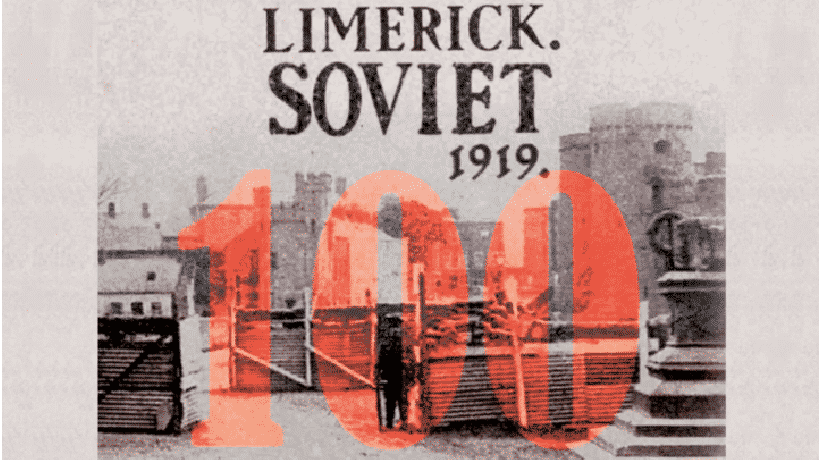

By Bernie McAdam
The Easter Rising of 1916 and the end of the First World War had opened up a revolutionary period in Ireland. After the defeat of the Dublin lockout in 1913 Ireland’s young and growing working class was beginning to flex its muscles again. The Bolshevik Revolution was inspiring the international working class.
A general strike in Ireland had already scuppered Britain’s attempt at introducing conscription in 1918. Working class militancy was to reach its peak during the War of Independence. The question posed, after the execution of Ireland’s leading socialist James Connolly – was there a revolutionary socialist leadership capable of leading the working class to the overthrow of capitalism and imperialism in Ireland?
The experience of the Limerick Soviet suggests the answer was a resounding no. Sinn Fein didn’t want strikes, the union leaders didn’t want political strikes. Even worse the trade union leaders, many of them comrades of Connolly, had no notion of challenging Sinn Fein for the leadership of the national independence struggle. Even declining to stand against them in elections.
Irish Labour Party and Trade Union Congress (ILPTUC) leaders like William O’Brien and Thomas Johnson would rather sell their members short rather than call for a major escalation in support of the Limerick Soviet. Johnson was to explain this as a fear of armed revolt even though ‘there might be an occasion to decide on a down tools policy which would have the effect of calling out the armed forces of the Crown. But Limerick was not the occasion.’
Of course for Johnson the occasion never came. He would never be prepared for this, thus giving Sinn Fein and the IRA a clear run, refusing to challenge their strategy for driving out the British. It meant ‘labour must wait’ or workers must not prosecute their independent interests lest national unity be threatened. All they got in return in the long run was a draconian anti-worker ‘free state’ and a northern partitioned state run by unionist bigots.
A Bolshevik revolutionary leadership would have called for the widest possible support for the Limerick Soviet throughout Ireland and Britain. Escalating the industrial action was vital to achieve victory. This would have inevitably triggered clashes with the British Army, just as a national rail strike would have done so. In this scenario a mass workers’ militia to defend the strikers and the Soviet would have been necessary.
A call for democratically run Soviets throughout Ireland should have been made. Such Soviets had to democratically decide the course of their struggle through mass meetings of workers with accountable and recallable delegates as with the Russian Soviets. This did not happen in Limerick and as a result it made the sell out easier when it came despite Cronin’s good intentions.
An Irish Bolshevik party would have stressed the need for a mobilisation of the working class, with the support of small farmers and landless labourers, in pursuit of their interests as a class. This would not have been counterposed to national independence but fought for alongside the anti-imperialist struggle. The working class is the only class who have a genuine stake in driving out the imperialists and therefore the only reliable force in such a struggle.
Indeed the only guarantee of a successful struggle against Britain was for workers to take the lead by using working class methods of struggle e.g. the general strike, the Soviet, the workers’ militia, etc. rather than the ‘labour must wait’ antics of the ILPTUC leaders and the limitations of a guerilla war of the republicans. In this way a strategy for Permanent Revolution might just have put Ireland on the road to a Workers Republic.